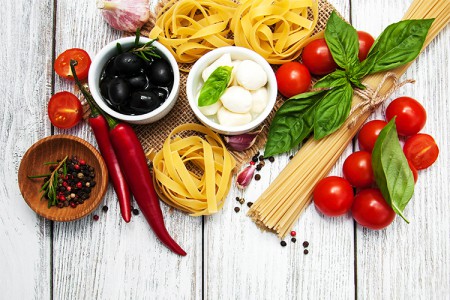How many times have we heard about the differences between North and South Italy?
The gap between the north and the south of Italy it is such an ancient question that has been going on since the time of the Unification of the country in 1861. Many aspects differ between these two regions: history, geography, architecture, culture, local traditions. Not to mention the most obvious difference: the food.
And above all, the southern-italian cuisine is proud of its food and wine heritage.
Thanks to the proximity to the sea, it bases its dishes on seafood, and thanks to mild climate, South Italy is one of the places where is possible to find a big variety of vegetables like tomatoes and aubergines and the excellent olive oil… not to mention the “pizza napoletana”, which has recently become UNESCO heritage.
But how would the southern-italians react if put in front of something different from their traditional dishes, such as an insect-based bread? Would they be willing to accept an unusual food in their diet?
The question was analyzed by a student from the Faculty of Food Science and Technology of Catania, Mattia Serranò, who has given an online invitation to participate in the survey only for people from southern Italy. The survey on insect consumption as a food source was performed on a random sample of 211 subjects.
The objectives focused specifically on the knowledge of the “entomophagy” theme, the tendency to accept the consumption of insects and the preferences among some possible commercial proposals of insects based foods.
The first part of the survey focused on the consumers’ inclination to consume innovative products, in order to identify the degree of knowledge of the topic “entomophagy” and also to understand their degree of knowledge about the food values linked to healthy aspects and environmental impact.
The second part wanted to evaluate the willingness to purchase three types of commercial products: biscuits with insect flour, insect flour and insects as snack through representative pictures of dishes with the price and the origin of insects.
It is interesting that people know the term entomophagy, in fact over 70% of the participants know its meaning and a large part of these declare they learned about through the mass media. Furthermore the 93.4% of people are aware of the nutritional characteristics of edible insects.
For what concerning the environmental impact, it seems it’s clear to the consumers the lower effect they might have, but they are still rather skeptical about possible long-term negative impacts.
How many of the respondents have already eaten insects? As a result, only 8.1% said they have consumed insects, mostly whole insects, and often only as a challenge between friends or to test the courage.
The personal level of neophobia for the samples was measured through a scale, the Food Neophobia Scale (FNS). Neophobia represents the major barrier: insects give to the consumer fear and disgust. This is because insects seen as a potential source of food contamination.
For 56% of the interviewees the main motivation that could push them to eat insects is “necessity”, followed by a 17.5% that would taste them as “experimentation of flavors” and also a 9% for “tradition/ local habits”. The question of “nutritional properties” involves only 7.6%, while the “taste” component does not seem to influence consumers (0.5%).
Among some possible commercial proposals of insects-based food, the respondents are mostly favorable to products based on flour, where insects are not visible; only 4.3% of the total says that they would prefer to consume whole insects. Crickets and silkworms flour is definitely the kind of product that makes people curious and produces less disgust, resulting the mostly accepted by consumers. Therefore, reducing the visibility does not necessarily improve the appreciation of the products, but certainly, not seeing insects in the dish increases acceptance and focuses attention on the combination of ingredients.
The last analyzed factor is the purchase price. It shows how this is an important factor, underlining that people want to spend as little as possible to buy insects-based products. We can say that the potential purchase is influenced by the appearance of the product but it is also strongly influenced by the price and origin.
On the other hand, there is a good opening towards the use of insects raw materials to feed animals, 72% agree with the idea. This a good beginning for insects used as feed.
The survey highlighted that it is certainly the great media clamor around the topic that provides most of the information for the consumers.
Although it is good that we talk about it, the prejudice is always present and well anchored in the mentality of consumers, so much that they hardly imagine insects as food, because insects are still seen as something filthy, alien and disgusting.
It is also important to increase knowledge about the positive nutritional aspects that could lead to an increase in edible insects consumption.
Sometimes there are cases where the curiosity towards something new begins and the consumer reviews his mental limits and his prejudices and get out of the box, getting involved.
I wonder if in a few years we will find in the restaurants a “pizza napoletana” made with insect flour.
Thanks to Mattia Serranò for the data.






